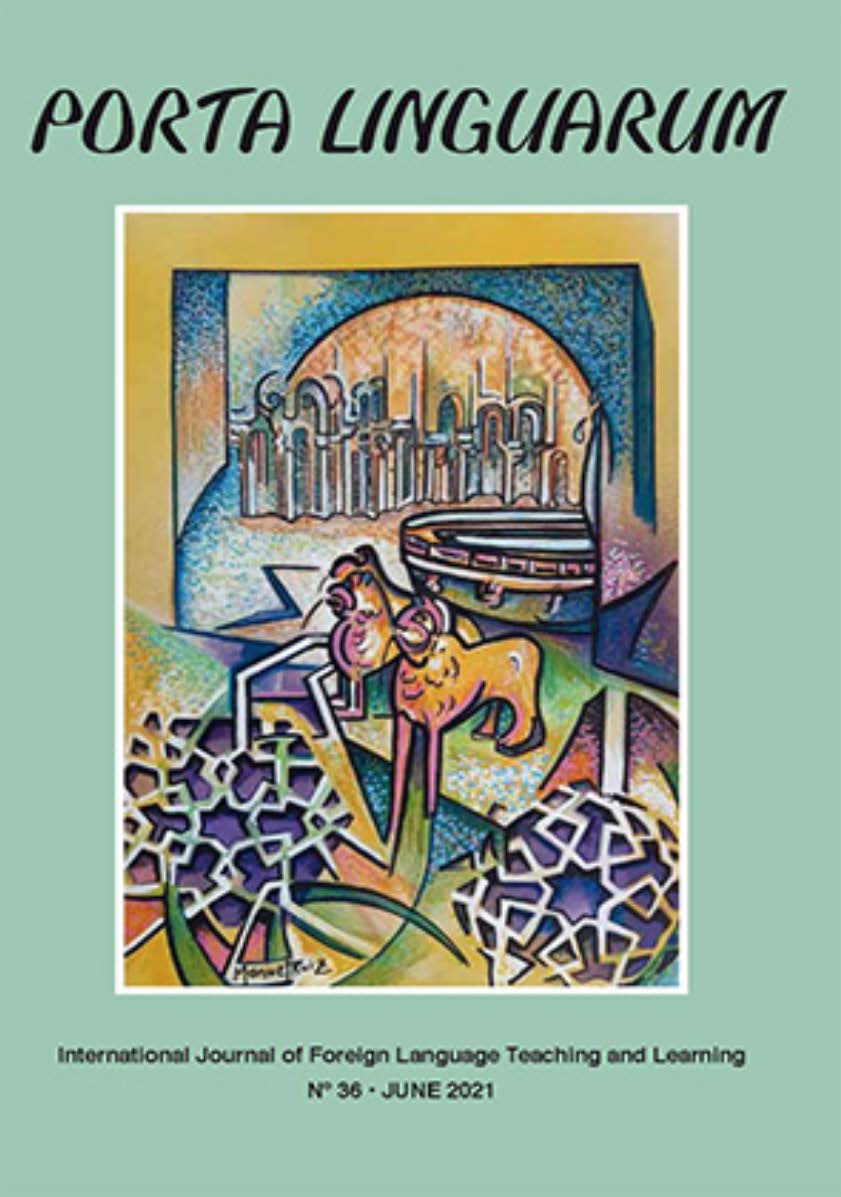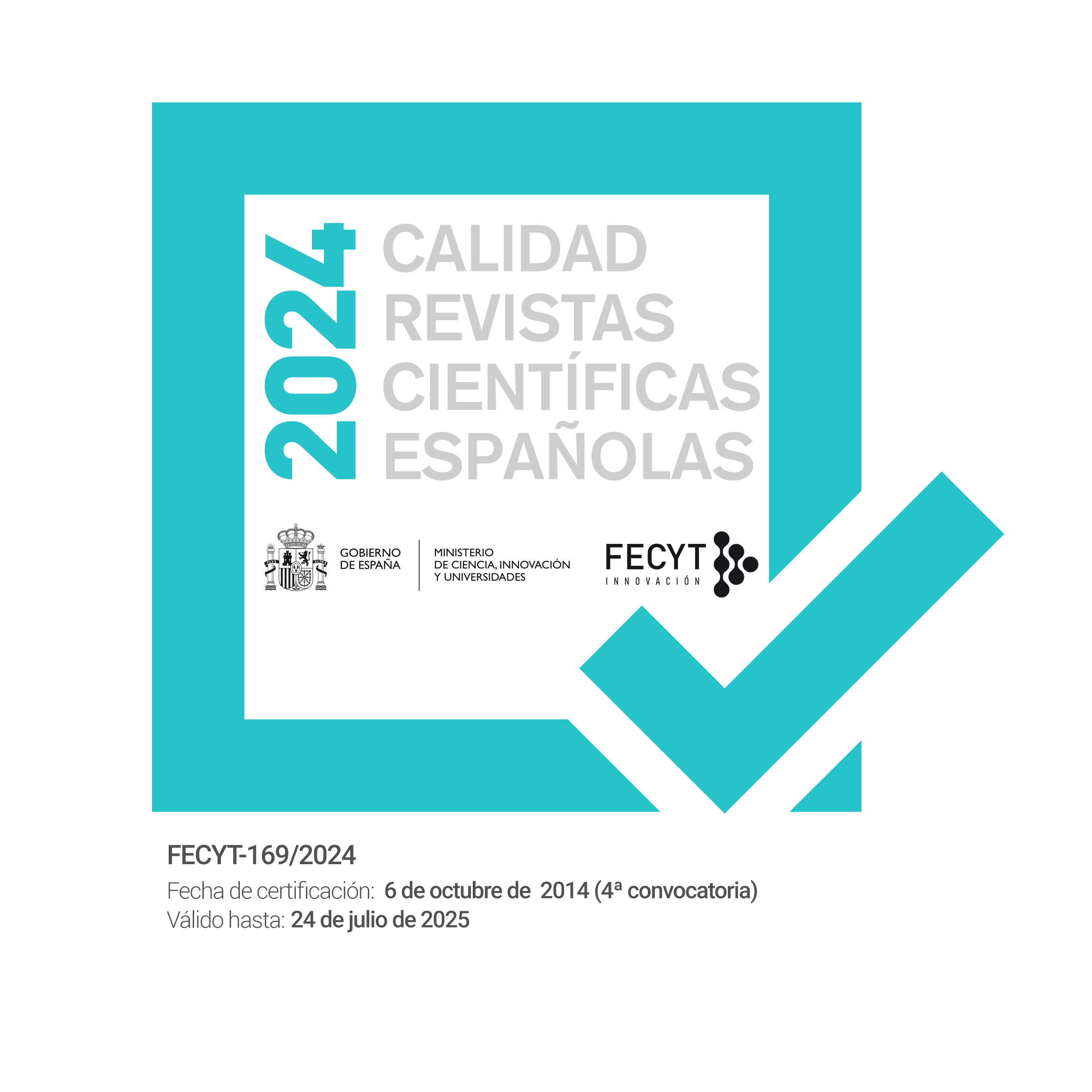Correlating self-efficacy with self-assessment in an undergraduate interpreting classroom: How accurate can students be?
DOI:
https://doi.org/10.30827/portalin.vi36.13897Keywords:
interpreting self-efficacy, self-assessment, self-assessment accuracy, consecutive interpreting, Chinese studentsAbstract
The current paper intends to explore whether there are significant correlations between students’ self-efficacy and their self-assessment accuracy and how the former mediates the latter. Framed within an undergraduate interpreting classroom in China, which shares similar pedagogical aims with general foreign language courses, a total of 53 senior students completed an Interpreting Self-Efficacy (ISE) Scale before self-assessing their English-Chinese consecutive interpreting performance. Spearman correlation tests were employed to investigate the correlations between students’ ISE level and their self-assessment accuracy, compared with the teacher’s marks. Although ISE and self-assessment accuracy were positively correlated, the relation was not significant. Medium to low level ISE could only vaguely predict students’ self-assessment performance, but students were capable of accurate self-assessment regardless of their ISE level. This justifies more rigorous reflection on self-regulated learning enabled by accurate self-assessment in language classrooms, which is simultaneously informed by multiple social and psychological variables experienced by individual learners, such as self-efficacy.
Downloads
References
Andrade, H., & Valtcheva, A. (2009). Promoting learning and achievement through self- assessment. Theory into Practice, 48(1), 12–19.
https://doi.org/10.1080/00405840802577544
Andrade, H., Wang, X., Du, Y., & Akawi, R. (2009). Rubric-referenced self-assessment and self-efficacy for writing. The Journal of Educational Research, 102(4), 287–302. https://doi.org/10.3200/JOER.102.4.287-302
Bandura, A. (1994). Self-efficacy. In V. S. Ramachaudran (Ed.), Encyclopedia of human behavior (Vol. 4, pp. 71–81). Academic Press.
Bandura, A. (1997). Self-efficacy: The exercise of control. W. H. Freeman and Company.
Bandura, A., & Schunk., D. H. (1981). Cultivating competence, self-efficacy, and intrinsic interest through proximal self-motivation. Journal of Personality and Social Psychology, 41(3), 586–598.
Bolaños-Medina, A., & Núñez, J. (2018). A preliminary scale for assessing translators’ self-efficacy. Across Languages and Cultures, 19(1), 53–78.
https://doi.org/10.1556/084.2018.19.1.3
Bontempo, K., & Napier, J. (2011). Evaluating emotional stability as a predictor of interpreter competence and aptitude for interpreting. Interpreting, 13(1), 85–105.
https://doi.org/10.1075/intp.13.1.06bon
Boud, D. (1995). Enhancing learning through self-assessment. Kogan Page.
Boud, D., Lawson, R., & Thompson, D. (2013). Does student engagement in self-assessment calibrate their judgement over time? Assessment & Evaluation in Higher Education, 38(8), 941–956.
https://doi.org/10.1080/02602938.2013.769198
Bourke, R. (2017). Self-assessment to incite learning in higher education: Developing ontological awareness. Assessment & Evaluation in Higher Education, 1–13.
https://doi.org/10.1080/02602938.2017.1411881
Brown, G., & Harris, L. (2013). Student self-assessment. In J. H. McMillan (Ed.), The SAGE handbook of research on classroom assessment (pp. 367–393). Sage.
Brown, T., Andrade, H., & Chen, F. (2015). Accuracy in student self-assessment: Directions and cautions for research. Assessment in Education: Principles, Policy & Practice, 1–14. http://dx.doi.org/10.1080/0969594X.2014.996523
Cai, R., & Dong, Y. (2015). Interpreter training and students of interpreting in China. Journal of Translation Studies, 16(4), 167–191.
Cassidy, S. (2007). Assessing ‘inexperienced’ students' ability to self-assess: Exploring links with learning style and academic personal control. Assessment & Evaluation in Higher Education, 32(3), 313–330.
http://dx.doi.org/10.1080/02602930600896704
Chan, J., & Lam, S. (2010). Effects of different evaluative feedback on students’ self-efficacy in learning. Instruction Science, 38, 37–58.
http://dx.doi.org/10.1007/s11251-008-9077-2
Chemers, M., Hu, L., & Carcia, B. (2001). Academic self‑efficacy and first-year college student performance and adjustment. Journal of Educational Psychology, 93(1), 55–64.
Chen, Y. (2008). Learning to self-assess oral performance in English: A longitudinal case study. Language Teaching Research, 12(2), 235–262.
http://dx.doi.org/10.1037/0022-0663.93.1.55
de Bot, K., Wander, L., & Marjolijn, V. (2005). Second language acquisition: An advanced resource book. Routledge.
Dörnyei, Z. (2006). Individual differences in second language acquisition. AILA Review, 19, 42–68.
Dragemark, A. (2006). Learning English for Technical Purposes: The LENTEC Project. In T. S. Roberts (Ed.), Self, peer, and group assessment in e-learning (pp. 169–190). Information Science Publishing.
Falchikov, N. (2004). Improving assessment through student involvement: Practical solutions for aiding learning in higher and further education. Routledge Falmer.
Fernández, F., & Zabalbeascoa, P. (2012). Correlating trainees’ translating performance with the quality of their metacognitive self-evaluation. Perspectives: Studies in Translatology, 20(4), 463–478.
http://dx.doi.org/10.1080/0907676X.2011.629730
Han, C., & Riazi, M. (2018). The accuracy of student self-assessments of English-Chinese bidirectional interpretation: A longitudinal quantitative study. Assessment & Evaluation in Higher Education, 43(3), 386–398.
https://doi.org/10.1080/02602938.2017.1353062
Huang, S. (2015). Understanding learners’ self-assessment and self-feedback on their foreign language speaking performance. Assessment & Evaluation in Higher Education, 1–18. http://dx.doi.org/10.1080/02602938.2015.1042426
Hung, Y. (2019). Bridging assessment and achievement: Repeated practice of self-assessment in college English classes in Taiwan. Assessment & Evaluation in Higher Education, 44(8), 1191–1208.
https://doi.org/10.1080/02602938.2019.1584783
Ivars, A., Catalayud, D., & Forés, M. (2014). Self-efficacy and language proficiency in interpreter trainees. The Interpreter and Translator Trainer, 8(2), 167–182.
http://dx.doi.org/10.1080/1750399X.2014.908552
Kissling, E., & O’ Donnell, M. (2015). Increasing language awareness and self-efficacy of FL students using self-assessment and the ACTFL proficiency guidelines. Latin American, Latino and Iberian Studies Faculty Publications, (151), 1–24.
https://scholarship.richmond.edu/lalis-faculty-publications/151
Kostons, D., van Gog, T., & Paas, F. (2012). Training self-assessment and task-selection skills: A cognitive approach to improving self-regulated learning. Learning and Instruction, 22(2), 121–132. http://dx.doi.org/10.1016/j.learninstruc.2011.08.004
Lee, S. (2014). An interpreting self-efficacy (ISE) scale for undergraduate students majoring in consecutive interpreting: Construction and preliminary validation. The Interpreter and Translator Trainer, 8(2), 183–203.
http://dx.doi.org/10.1080/1750399X.2014.929372
Lee, S. (2018). Exploring a relationship between students’ interpreting self-efficacy and performance: Triangulating data on interpreter performance assessment. The Interpreter and Translator Trainer, 12(2), 166–187.
https://doi.org/10.1080/1750399X.2017.1359763
Lee, Z. (2015). The reflection and self-assessment of student interpreters through logbooks: A case study [Doctoral dissertation, Heriot-Watt University]. ROS Theses Repository.
https://www.ros.hw.ac.uk/bitstream/handle/10399/3033/LeeZ_1015_sml.pdf?sequence=1&isAllowed=y
Li, X. (2018). Self-assessment as ‘assessment as learning’ in translator and interpreter education: Validity and washback. The Interpreter and Translator Trainer, 1–20.
https://doi.org/10.1080/1750399X.2017.1418581
Liu, X. (2018). A longitudinal study of dynamic changes in and contributing factors of learner belief of Chinese foreign language learners. English Language Teaching, 11(7), 61–70. https://doi.org/10.5539/elt.v11n7p61
MacIntyre, P., Noels, K., & Clement. R. (1997). Biases in self-ratings of second language proficiency: The role of language anxiety. Language Learning, 47(2), 265–287.
McMillan, J., & Hearn, J. (2008). Student self-assessment: The key to stronger student motivation and higher achievement. Educational Horizons, 87(1), 40–49.
https://www.jstor.org/stable/42923742
Ng, J., & Earl, J. (2008). Accuracy in self-assessment: The role of ability, feedback, self-efficacy and goal orientation. Australian Journal of Career Development, 17(3), 39–50. https://doi.org/10.1177/103841620801700307
Orsmond, P., Merry, S., & Reiling, K. (1997). A study in self-assessment: Tutor and students’ perception of performance criteria. Assessment & Evaluation in Higher Education, 22(4), 357–369. http://dx.doi.org/10.1080/0260293970220401
Pajares, F. (1996). Self-efficacy beliefs in academic settings. Review of Educational Research, 66(4), 543–578.
Pan, J., & Yan, X. (2012). Learner variables and problems perceived by students: An investigation of a college interpreting programme in China. Perspectives: Studies in Translatology, 20(2), 199–218.
http://dx.doi.org/10.1080/0907676X.2011.590594
Panadero, E., Brown, G., & Strijbos, J. (2016). The future of student self-assessment: A review of known unknowns and potential directions. Educational Psychology Review, 28(4), 803–830. http://dx.doi.org/10.1007/s10648-015-9350-2
Panadero, E., Jonsson, A., & Botella, J. (2017). Effects of self-assessment on self-regulated learning and self-efficacy: Four meta-analyses. Educational Research Review, 22, 74–98. http://dx.doi.org/10.1016/j.edurev.2017.08.004
Panadero, E., Tapia, J., & Huertas, J. (2012). Rubrics and self-assessment scripts effects on self-regulation, learning and self-efficacy in secondary education. Learning and Individual Differences, 22, 806–813.
http://dx.doi.org/10.1016/j.lindif.2012.04.007
Panadero, E., Tapia, J., & Reche, E. (2013). Rubrics vs. self-assessment scripts effect on self-regulation, performance and self-efficacy in pre-service teachers. Studies in Educational Evaluation, 39, 125–132.
http://dx.doi.org/10.1016/j.stueduc.2013.04.001
Paulhus, D. (1991). Measurement and control of response bias. In J. Robinson, P. Shaver, & L. Wrightsman (Eds.), Measures of personality and social psychological attitudes (pp. 17–59). Academic Press.
Postigo Pinazo, E. (2008). Self-Assessment in Teaching Interpreting. Traduction, terminologie, rédaction, 21(1), 173–209. https://doi.org/10.7202/029690ar
Raaijmakers, S., Baars, M., Paas. F., van Merriënboer, J., & van Gog, T. (2019). Effects of self-assessment feedback on self-assessment and task-selection accuracy. Metacognition and Learning, 14, 21–42.
https://doi.org/10.1007/s11409-019-09189-5
Reybroeck, M., Penneman, J., Vidick, C., & Galand, B. (2017). Progressive treatment and self-assessment: effects on students’ automatisation of grammatical spelling and self-efficacy beliefs. Reading and Writing, 30, 1965–1985.
https://doi.org/10.1007/s11145-017-9761-1
Schjoldager, A. (1996). Assessment of simultaneous interpreting. In C. Dollerup, & V. Appel (Eds.), Teaching translation and interpreting: New horizons (pp. 187–195). John Benjamins Publishing Company.
Shaban, S., Aburawi, E., Elzubeir, K., Elango, S., & El-Zubeir, M. (2016). Factors influencing medical students’ self-assessment of examination performance accuracy: A United Arab Emirates study. Education for Health, 29, 75–81.
http://dx.doi.org/10.4103/1357-6283.188688
Stauffer, L. (2011). ASL students’ ability to self assess ASL competency. Journal of Interpretation, 21(1), 80–95. http://digitalcommons.unf.edu/joi/vol21/iss1/7
Stefani, L. (1994). Peer, self and tutor assessment: Relative reliabilities. Studies in Higher Education, 19(1), 69–75.
http://dx.doi.org/10.1080/03075079412331382153
Wang, C., Kim, D., Bai, R., & Hu, J. (2014). Psychometric properties of a self-efficacy scale for English language learners in China. System, 44, 24–33.
http://dx.doi.org/10.1016/j.system.2014.01.015
Yan, X., Pan, J., & Wang, H. (2018). The Interplay between foreign language anxiety, willingness to communicate and other learner factors in tertiary interpreting classrooms. In X, Yan, J. Pan, & H. Wang (Eds.), Research on translator and interpreter training: A collective volume of bibliometric reviews and empirical studies on learners (pp. 147–168). Springer.
https://doi.org/10.1007/978-981-10-6958-1
Yan, X., & Wang, H. (2012). Second language writing anxiety and translation: Performance in a Hong Kong Tertiary Translation Class. The Interpreter and Translator Trainer, 6(2), 171–194.



















